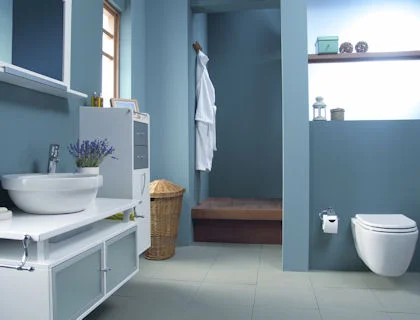Colours effect to our moods and reflect our personality. It influences our thoughts and actions. There is a science to choosing the right hues for our walls – matching the colours with the emotions we want to evoke in each room. Any room renovation cannot be complete without repainting. Here are some colour guidelines most renovators, decorators, and home builders will recommend.
Although different colours and tones may affect people in many ways – depending on one’s gender, age, personality and general upbringing and locality, everyone reacts similarly to some extent.
Warm Colours
Warm colours include reds, yellows, orange, and yellow greens. These are radiant, cosy, and with warm undertones. Warm colours are best in rooms where you want to induce excitement, energy, and cheer. These colours also help brighten up a room that is hardly reached by natural light.
Red Hues
Red is a strong stimulant. It encourages conversation, raise energy levels, and stimulates appetite. It is best for rooms where you want excitement and activity. It is not an accident that you see a lot of dark reds in dining rooms and rich red accents in living rooms.
Cheery Yellows
Yellow is a happy colour. It instantly lit up the room. Light and buttery yellows are perfect for kitchens and breakfast rooms. Maize and butterscotch are muted enough for the more formal setting of your dining room. But avoid too much of the solid bright yellows as it can also be overwhelming and painful on the eye. A professional decorator or renovator can help you choose the best yellow shade for any room.
Orangey Colours
Orange hues are encouraging, bold, and welcoming. It excites one to action and thinking. Warm and bold oranges like corals and tangerines are perfect for family rooms and exercise rooms. They are also great entry or living room accents. Salmon works well for kitchens and dining rooms, while wine and apricot shades provide just the right amount of stimulant for your home office.
Warm colours can make small rooms appear smaller, and thus are best for large rooms. Use warm hues in rooms you would like to appear cosy, comfortable, and interesting.
Cool Colours
Cool colours are airy, casual, and relaxed. These group includes greens, blues, and purples. Cool colours are best for rooms meant for relaxing, meditating, or sleeping. They also counteract too much light in the room, creating a more comfortable atmosphere.
Greens
Green is the colour of the forest. It is considered the most soothing and restful. It calm things down, making it perfect for bathrooms and bedrooms. Properly combined with other shades, you can use green in almost any room in the house. Green and yellow combination brings the right cheerfulness to your morning room.
Blues
Blue is the colour most associated with water and the ocean. It is refreshing, clean, and calming at the same time. Sky, baby, and navy blues are ideal shades for bedrooms and baths. Brighter blues like periwinkle, cerulean or turquoise are great for social areas like dens and living rooms. Be careful with your choice of blue though. The perfect shade in the colour list might come off chilly in your room.
Purples
Purple is the universal colour. It is rich, luxurious and dramatic without the bright flush of reds and oranges. Lighter purples like lilac and lavender are relaxing and cool without the chill of blues. Use deep purples like indigo and orchid for luxurious bedrooms. Plums and amethyst are ideal for rooms meant for creativity and artistry.
Cool colours are recessive and thus make the room appear larger. Use cool shades in small spaces and rooms you would like to appear brighter, bigger, and more calming.
Neutral Colours
Neutral colours are colours of the earth including white, black, the browns, and the grays. These are favourites among renovators and designers as they tend to favour almost everyone. They naturally blend with brighter hues and are usually used to create the perfect character of the room. They provide the much needed contrast, layers, and textures that make a room put together without being overwhelming.
A neutral shade can be warm or cool, depending on its tone. Taupe, chocolate, and maroon and are warm tones, while ash, dark olive, and slate are cool hues.
Call us for all your home improvements and renovation needs. We are working with the best contractors and renovators in Brisbane. We will help assess your needs and connect you with the artists and workers who can best deliver your desires.









